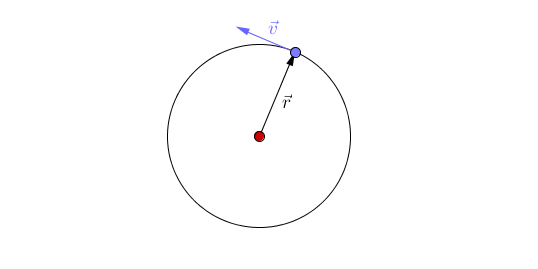Difference between revisions of "Circular Motion"
| Line 22: | Line 22: | ||
:[https://www.amazon.co.uk/gp/product/1782945970/ref=as_li_tl?ie=UTF8&camp=1634&creative=6738&creativeASIN=1782945970&linkCode=as2&tag=nrjc-21&linkId=a120d24dcc7cc7a58192069a3aafc1d2 ''Circular motion, pages 179, 321, GCSE Physics; The Complete 9-1 Course for AQA, CGP, AQA ''] | :[https://www.amazon.co.uk/gp/product/1782945970/ref=as_li_tl?ie=UTF8&camp=1634&creative=6738&creativeASIN=1782945970&linkCode=as2&tag=nrjc-21&linkId=a120d24dcc7cc7a58192069a3aafc1d2 ''Circular motion, pages 179, 321, GCSE Physics; The Complete 9-1 Course for AQA, CGP, AQA ''] | ||
:[https://www.amazon.co.uk/gp/product/1471851362/ref=as_li_tl?ie=UTF8&camp=1634&creative=6738&creativeASIN=1471851362&linkCode=as2&tag=nrjc-21&linkId=7d78d70a2044ee9982dae010c94af92a ''Circular motion, pages 227, GCSE Combined Science Trilogy 2, Hodder, AQA ''] | :[https://www.amazon.co.uk/gp/product/1471851362/ref=as_li_tl?ie=UTF8&camp=1634&creative=6738&creativeASIN=1471851362&linkCode=as2&tag=nrjc-21&linkId=7d78d70a2044ee9982dae010c94af92a ''Circular motion, pages 227, GCSE Combined Science Trilogy 2, Hodder, AQA ''] | ||
| + | |||
| + | ====Edexcel==== | ||
| + | |||
| + | :[https://www.amazon.co.uk/gp/product/1292120223/ref=as_li_tl?ie=UTF8&camp=1634&creative=6738&creativeASIN=1292120223&linkCode=as2&tag=nrjc-21&linkId=068ecf40278c32406a7f1c6e66751417 ''Circular motion, page 14, GCSE Physics, Pearson Edexcel ''] | ||
| + | :[https://www.amazon.co.uk/gp/product/1782945741/ref=as_li_tl?ie=UTF8&camp=1634&creative=6738&creativeASIN=1782945741&linkCode=as2&tag=nrjc-21&linkId=30da4f2178da182547b62a7329d13b57 ''Circular motion, page 150, GCSE Combined Science; The Revision Guide, CGP, Edexcel ''] | ||
| + | :[https://www.amazon.co.uk/gp/product/1292120193/ref=as_li_tl?ie=UTF8&camp=1634&creative=6738&creativeASIN=1292120193&linkCode=as2&tag=nrjc-21&linkId=572df39392fb4200db8391d98ae6314e ''Circular motion, page 299, GCSE Combined Science, Pearson Edexcel ''] | ||
| + | :[https://www.amazon.co.uk/gp/product/1782945733/ref=as_li_tl?ie=UTF8&camp=1634&creative=6738&creativeASIN=1782945733&linkCode=as2&tag=nrjc-21&linkId=2a2dbec9db6bf5766c0458d908fa0a52 ''Circular motion, pages 17, 59, GCSE Physics; The Revision Guide, CGP, Edexcel ''] | ||
| + | :[https://www.amazon.co.uk/gp/product/1782948163/ref=as_li_tl?ie=UTF8&camp=1634&creative=6738&creativeASIN=1782948163&linkCode=as2&tag=nrjc-21&linkId=0fdbfd5dd397d6e24a9dfb250f08587f ''Circular motion, pages 23, 35, 185, 186, GCSE Physics, CGP, Edexcel ''] | ||
Latest revision as of 15:59, 16 November 2019
Key Stage 4
Meaning
Circular motion is when an object travels in a circular path due to a constant force acting towards the centre of that circular path.
About Circular Motion
- An object will move in straight line unless a force acts to accelerate the object to change its direction.
- Circular motion is caused by a constant force acting towards a point.
- An object following circular motion has a constant speed (a scalar) but does not have a constant velocity (a vector) as it is changing direction.
| This animation shows the circular motion of an object due to a force pulling it towards the centre of the circle. The velocity is constantly changing even though the speed is constant. It is accelerating due to the force pulling it towards the centre. |
References
AQA
- Circular motion, page 101, GCSE Physics; The Revision Guide, CGP, AQA
- Circular motion, page 148, GCSE Combined Science Trilogy; Physics, CGP, AQA
- Circular motion, pages 141, 147, GCSE Physics; Student Book, Collins, AQA
- Circular motion, pages 179, 321, GCSE Physics; The Complete 9-1 Course for AQA, CGP, AQA
- Circular motion, pages 227, GCSE Combined Science Trilogy 2, Hodder, AQA
Edexcel
- Circular motion, page 14, GCSE Physics, Pearson Edexcel
- Circular motion, page 150, GCSE Combined Science; The Revision Guide, CGP, Edexcel
- Circular motion, page 299, GCSE Combined Science, Pearson Edexcel
- Circular motion, pages 17, 59, GCSE Physics; The Revision Guide, CGP, Edexcel
- Circular motion, pages 23, 35, 185, 186, GCSE Physics, CGP, Edexcel
